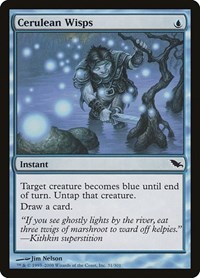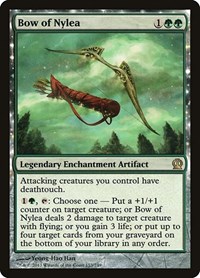Doug's Dungeon - Mysterium
“A LIME GREEN FROG RIDING A UNICYCLE!”
You wake with a start. The chair you’ve been tied to for the last two weeks is surprisingly comfy, so sleep has been rather pleasant. What HASN'T been pleasant however, is how that sleep ends. Like clockwork, a straight up ghost has been floating through the wall into the room, yelling incomprehensible gibberi- “A SAD BEAR IN A CONFESSIONAL!” -ish… and yep there he goes. Leaving again like nothing happened. How relieving it is that Doug suddenly bursts into the room to release you.
Ohhhhhh man I’m really sorry. I thought some of the gremlins from the third floor would have released you on their nightly cleaning session, but it seems they lack the initiative to think outside three-week-old orders. But hey while you’re here why don’t we-
“AN IRATE FISH WEARING PANTS EATS A BURGER!” Shouts the ghost as it flounders back into the room. It stretches out its arms and fingers as if to retain your attention, and licks its lips. You ponder for a moment if it does so out of some memory of a habit it had in life. Or perhaps, it is aware of how its lips are incapable of being dry, but continues to do so in some vain attempt to stay connected to the mortal coil. It’s next words are softer, and more evenly paced “Compare yourself, with disdain, to straws used for parties, where you are the regular straws” Doug makes an effort to cut in.
Uhh, okay, maybe we can hit two birds with one stone here. See, I wanted to show you this board game I picked up for Hobbymaster’s ‘cooperative’ fortnight. It’s called Mysterium. It’s about a bunch of psychics who are trying to determine the criminal cause of a ghost’s untimely death. Catch is, the ghost can only communicate through fevered visions, and I think we can apply the same tactic here. You… DO have latent psychic abilities like me, right?
You decide, as usual, not to answer such questions. Meanwhile, Doug begins setting up the table for a round of Mysterium. Decks of numbered cards, some brown and others a ghostly blue, are shuffled and cards dealt from each. A large cardboard screen is set up on the far end of the table, where the ghost comes to rest behind. You, Doug (and a gremlin you previously did not notice) each take a character sleeve, a coloured crystal ball, and some pointer-shaped tokens.
So here’s how we play. Ever played Cluedo? In order to implicate a murderer, you need to know who dunnit, where dey dunnit, and what derty ding dey dunnem in wit. In Mysterium, our ghost (usually another player, but I mean hey, we have an actual ghost so when in Rome) tries to tell us all of the suspects who were in the manor at the time of its death. We then need to know where they were, and what object they were interacting with. Our crystal ball tokens show how far along we are in our efforts.
The ghost begins materializing large cards and distributing them to the psychics. You look at them puzzled.
Okay, so these are ‘Vision’ cards. The ghost hands us a bunch as a way of communicating what our cards are. And yeah, they all as ‘Salvador Dali’-esque in nature. As an example, I have a Knight drowning in the sand of an hourglass. Knights are military, which makes me associate this card with the character card featuring military equipment and flags. And blep, I place my crystal ball on it. Now you may agree or disagree with me and place an appropriate clairvoyancy token next to my crystal ball. If you guess right, you’ll get clairvoyancy points, which are useful in the next phase. Each other psychic does the same for their vision cards and crystal ball.
Once everyone has chosen a card, the ghost then tells us who placed correctly, and who didn’t. If you are correct, you scoop up the card you selected and place into your little card-holding sleeve, and move to the next category. If not, you stay where you are, and try again next turn. Gameplay continues like this until everybody has a person, location and object. Problem is, we only have 7 turns to complete this process. If anyone is still trying to pick objects when the clock strikes 8 (oh yeah the box comes with this cute little clock to assemble that tracks turns) the games ends in a loss.
Assuming we all make it to the end, we have a final phase in which the ghost tells us who, among the suspects, was the murderer. We display all of the card sets, and the ghost places 3 vision cards to implicate one of them. Based on how many clairvoyancy points each player gets, the vision cards are revealed one by one, with psychics casting secret votes based on how clairvoyant they were. The more points you have, the more cards you get to see before you vote. Once the votes are tallied, the players will implicate the suspect with the highest vote. If you guess right, Everybody wins! The ghost can find rest and the psychics can go on their merry way. Guess wrong ,however, and the game ends in a loss, and the ghost carries on with usual ghost business forever I guess.
Mysterium is precisely the kind of game that fulfills the idea of a cooperative game to me. In many cooperative games, players have free range of communication. Knowing this, games like Pandemic and Forbidden Island need to crank the difficulty and throw out harrowing choices for players to argue over. This in no way comes as a detriment to those titles, but games like Mysterium take cooperation in another direction. The fact that the ghost can not directly communicate with the psychics (nor can they makes gestures or sounds as context clues), becomes the focal point of the game. There is an imbalance in known information. Instead of being able to use the full range of spoken language to correct it, you are confined to speaking though the vision cards. The ghost needs to listen as psychics discuss the vision cards they are dealt. What associations are they making? What features of cards are they noticing? The psychics need to be aware that the ghost is listening. They need to be vocal about what they are learning, so the ghost can use the feedback for later visions.
True cooperation, in this sense, is the players working together despite an obstacle placed between them. Or even players having completely different, yet linked roles. Imagine the ‘warthog’ jeep from Halo. You can drive it or man the mounted machine gun, but you can’t do both. The driver’s responsibility is to position the vehicle to take minimal fire, while making sure the gunner can see and shoot with ease. Meanwhile the gunner needs to shoot enemies until they are dead from bullets so that the vehicle does not come under fire. Mysterium reminds me of such symbiotic relationships. Unlike other turn-based cooperative games where, in theory, a single player could just play multiple roles that function the same and succeed, games like Mysterium put in an information barrier and role differences that prevents such gameplay. A cooperative game, to me, should be designed in a way that says “You HAVE to work with someone else for this to function at all”. Other games I would better describe as ‘teamwork’. Games which can be completed alone, but done slightly faster with more players.
As for Mysterium itself, the pieces are GORGEOUS. Every single card has beautiful artwork, and I love the contrasting art styles between suspect cards and the vision cards. Characters, locations and items are real, tangible things that call for vivid, precisely detailed art. The vision cards, however, represent the wispy daydreams and disembodied thoughts floating into the psychics’ minds. As such these cards have a misty appearance to them. It feels very surreal to look at them, as if opening a door into a dream. Nothing in the vision cards makes sense out of context, and everything seems out of place with each other, contrasted with the orderly suspect cards.
Setup time is a bit daunting given the number of pieces and decks of cards that need to be shuffled and dealt out. Every card that the ghost draws, to be put into the sleeves of its screen, needs to be paired with an identical card for the psychics to play with. If you know ahead of time that you will be playing Mysterium, I would suggest you get it set up before guests come over for board game night. Furthermore, Mysterium is a real table-space hog. Unless you have a sizable table or floor space to play on, you’re going to have a lesser experience.
Overall, I am rather impressed with the game. Put together, it is a genuinely fun experience that I recommend for at least intermediate players. With space for up to 7 players at once, you can build entire parties around playing it, though the setup time makes multiple rounds take a lot of time. My only gripe with it is the second phase of the game involving choosing the culprit. Using the standard rules, the game goes from a cooperative experience in the first phase, to one with no communication in the second. As of writing, every round I’ve played has gone to the second phase, only for us to whiff on the vote and lose. If you pick this game up, make sure to tell me any house rules you generate to fix this.
That’s where I’m gunna end it today, so make sure t-
“A NINETY KILOGRAM PROJECTILE FLUNG OVER THREE HUNDRED METRES” Screams the ghost as Doug attempts to depart the room. Doug turns to you
*sigh* Alright I think I get it now. I let one of the local peasants use the internet in my office and I guess he died of starvation looking at memes. Am I right?
The ghost drops its shoulders as a wide grin spreads across its face. As it does so, the ghost begins to fade before your very eyes, and disappears.
What a big silly. Memes in moderation is what I always say.
Don't own Mysterium yet? No problem, you can find it on our webstore here.

Doug Moore

I'm an avid lover of all things table top. I also have a growing collection of board games which inspire me to create my own. I put my loud and expressive personality to good use as a dungeon master for my friends, having run many campaigns through 4th and 5th edition D&D.
Follow him on Twitter
@Dugggernaut















